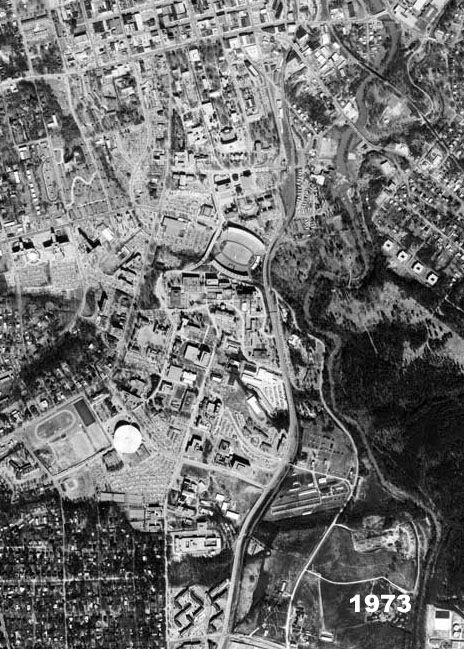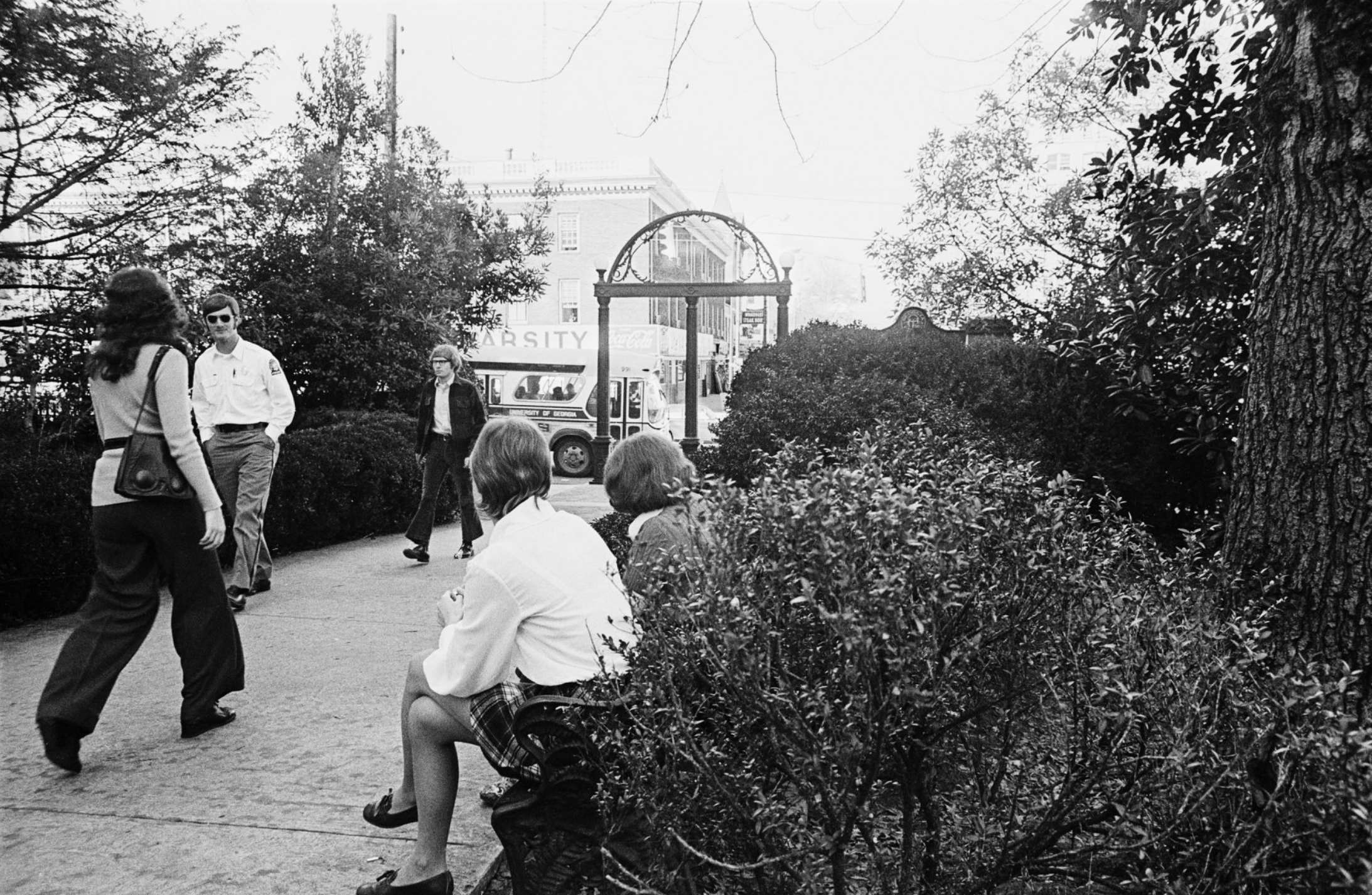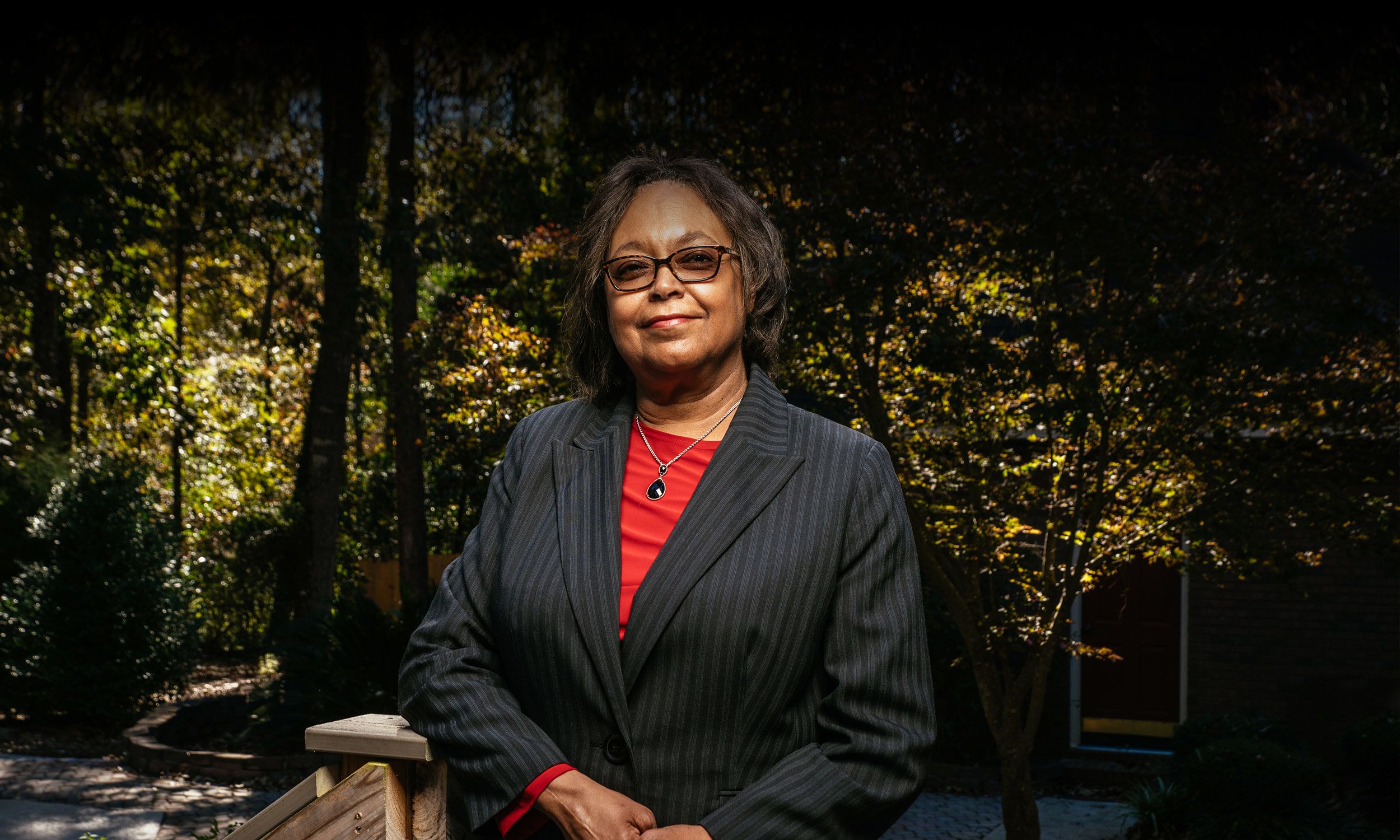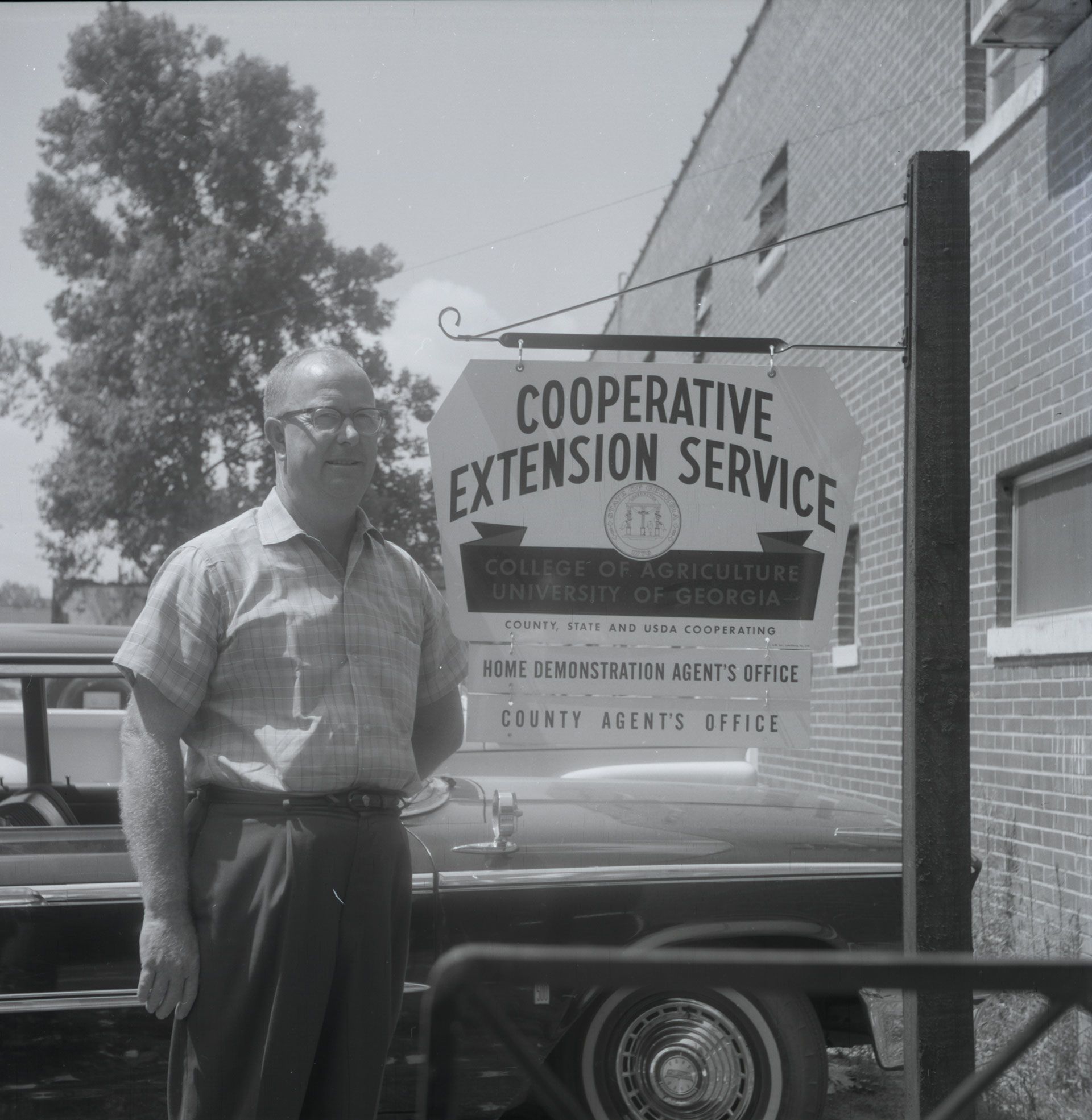
A study in persistence
Hard work, determination and mentorship led to success for Linda Glanton Early, the first Black woman to graduate from UGA's College of Agricultural and Environmental Sciences

Linda Glanton Early never intended to make University of Georgia history as the first Black female graduate of the College of Agricultural and Environmental Sciences. In fact, she never imagined attending UGA at all.
Growing up in tiny Turin, Georgia — then a town of about 200 people in rural Coweta County — Early attended segregated public schools until 1966, her freshman year of high school.
Until that fall, Black high school students from all over Coweta County were bussed to Central High School in Newnan, 11 miles northwest of Early’s home in Turin.
But that year, Coweta County Schools rolled out its Freedom of Choice plan, one of a number of plans established throughout the country aimed at the integration of schools in states that still had segregated systems. Coweta County’s students could choose what school they wanted to attend.
“I ended up in the first group to integrate East Coweta High School. There were eight Black freshmen and one senior who chose to go there and, to this day, I cannot explain why I made that choice,” Early said. “Everyone I knew had gone to Central High, and I would have known all of the kids who went there because I had gone to school with them and played basketball against them. I really don’t remember why I chose to do it.”
That first year of high school, according to Early, was “horrible.”
“All of the Black students who chose to go to white schools were picked up on the same bus, which would go to the elementary school first and then to the high school and we were always late getting there,” said Early, recalling how awkward and embarrassed she felt walking into class when all of the other students were already seated, making her the focus of unwanted attention.
She recalls one student hurling racial slurs and making rude gestures whenever she passed and white students shunning her and other Black students in the school’s cafeteria, picking up their trays and walking away if they sat too close to their tables.

Linda Glanton Early pictured among the top eight seniors — based on grades, activities and contributions — in the Class of 1970 at East Coweta High School. The caption in the yearbook read, “With an all-A average, Linda Glanton is an outstanding Senior. She served the Co-ed Y as President and will be included in two national honor publications.”
Linda Glanton Early pictured among the top eight seniors — based on grades, activities and contributions — in the Class of 1970 at East Coweta High School. The caption in the yearbook read, “With an all-A average, Linda Glanton is an outstanding Senior. She served the Co-ed Y as President and will be included in two national honor publications.”
The behavior wasn’t limited to students, she said, recalling one teacher who gave her and her best friend Lillie Green failing math grades even though they knew they had done the work correctly. The girls sought help from a former teacher when they began to notice their grades falling.
“He’d become principal at the elementary school we went to. He asked if we had our papers. We took our papers to him and he reviewed them. We took the papers back to our school and she upped our grades to a C,” Early said.
After that, things improved year after year. Early joined the girls basketball team and she became active as a leader in several school clubs. By her senior year, Early was among the top five students in her graduating class.
“We learned that the school administrators were shaking in their shoes because they thought one of us might be selected as valedictorian,” Early said.
During her senior year, Early began working at the Tastee-Freez in neighboring Haralson, Georgia, after the restaurant’s owner and local farmer, William Estes, contacted the high school principal looking for student workers. It was while she worked for Estes that Early received a letter from Morris Brown University, where she’d planned to enroll in the fall, telling her there was no availability in the freshman dorms for her.
Panicked, Early sought guidance from her family and friends, who encouraged her to speak to Estes to learn whether he had connections at West Georgia College.
“I got up the guts to talk to him and to tell him my situation. He ended up coming back to me one day and telling me he’d had a guest to his house for dinner who turned out to be the dean of the College of Agriculture at University of Georgia, Henry Garren, and that my name had come up over the dinner table,” Early said.

Aerial view of the University of Georgia in 1973
Aerial view of the University of Georgia in 1973
Garren told Estes that, if Early would submit her enrollment paperwork to him, he’d facilitate her application.
“That is how I ended up at UGA and the College of Agriculture,” said Early. “We were the largest number of Black freshmen to enter the University of Georgia that year in 1970, making a total of 200 (Black) students at UGA.”
After enrolling in the college, Early took classes in agronomy and dairy science before deciding on a major in food science. In her first term, she earned a 4.0 GPA, winning her a spot in the Alpha Lambda Delta Honor Society.
“I felt so grateful to Dr. Garren that I wanted to stay in the College of Agriculture,” Early said.
While at the college, Early performed clerical work as a work-study student in the dean’s office for Robert Wheeler, the college’s director of instruction, who became an important mentor to her.
“Dr. Wheeler became like my godfather. He was a beautiful, loving person,” she said, adding that, as her advisor, he’d nominated her for a Gold Kist Scholarship that she received at the end of her freshman year. “One day I went in and the secretary was very excited about something. When Dr. Wheeler came in, she said, ‘Don’t you have something to tell Linda?’ Dr. Wheeler told me he filled out the application for the scholarship for me and I’d won the scholarship for the next three years. I had no idea he’d filled out the paperwork.”
That scholarship led to a summer job Early worked every year in one of Gold Kist’s pork processing facilities in Newnan, where they produced hams, hot dogs and bologna. By her senior year in 1974, Early was a member of the Food Science Club and attended an annual food science convention in Miami.
Unlike her early high school experiences, Early said her experiences at the college were positive and welcoming, and she immersed herself in her studies.
“I had girlfriends who came to UGA two years behind me, and they laughed at me because I hadn’t been to a football game yet,” she said. “I was a serious student; I didn’t party. I remember I went to one basketball game, but other than that I just went to church, saw people on the yard and went home. I never had an issue with any student or professor.”
But it was Wheeler who had the most influence on Early’s experiences. Recounting their friendship, Early recalled that, when she went to get her driver’s license renewed, she was told she needed glasses and Wheeler helped her get a pair of glasses through the local Lion’s Club. And when Early’s mother, Rachel Glanton Brooks, passed away unexpectedly, Wheeler and his wife traveled to her hometown for the funeral, bringing her back to Athens afterward.
“He was such a special man. I loved him like a blood grandfather,” she said.
Early was the first person on her mother’s side of the family to attend college, while three of her eight half siblings attended Fort Valley State University.
“I didn’t focus on being poor. I knew as a child that I wanted to go to college. I didn’t think about money. I just took my lessons and applied myself and did all I could do to the best of my ability. If I had been a weak student, doors wouldn’t have been open to me, but I applied myself because I wanted to be able to take care of myself. That was my goal,” she said.


After graduation, Early joined UGA Cooperative Extension as an agent in Bibb County, supervising the newly established, federally funded food and nutrition program for underserved families in the Macon area.
“We had parapros who would go into homes to work with homemakers on nutrition and food planning. For the children, we had traditional 4-H and we also had a program to go along with it that taught them about food and nutrition from second through eighth grades,” Early said. “I had 11 schools with 4-H clubs. I went to the individual classrooms and taught 30-minute lessons. We trained them on how to compete in Project Achievement and they attended summer camps at Rock Eagle.”
It was at one of her 4-H schools that Early met her future husband, Michael Early, in 1977. He was working as a substitute teacher while performing his pharmacy school residency at the major hospital in Macon.
“I was in the office talking to the secretary about a 4-H fundraiser when he came in to talk to the principal. When he left, I asked the secretary, ‘Why didn’t you introduce me?’ She said, ‘Oh, you don’t know Mr. Early?’ She promised to call me when he was there again,” Linda Early said. “Three weeks later, she called and said ‘He’s over here, can you get over here now?’ Well, I left the function I was at and went to the school.”
The two were introduced and exchanged telephone numbers and the rest, as they say, is history.

Linda Glanton Early at her home in Byron, Georgia.
Linda Glanton Early at her home in Byron, Georgia.
The couple were married in 1977 and Early continued working for UGA Extension until the couple’s daughter, Andrea, was born in January 1979, followed by their son, Michael Jr., in December 1980. Early stayed home with her children while her husband attended medical school at Morehouse University for two years, then transferred to Emory University School of Medicine where he graduated in 1984.
Early went back to work with UGA Extension in Fulton County for two years, then worked with Fort Valley Extension from 1984 until 1987, when the family moved to North Carolina. Michael Early set up a medical practice in Pembroke, N.C., and the couple’s third child, Eric, was born in May 1988. While raising their family, Early earned her master’s degree in education administration from Pembroke University in 1991.
In 1992, the family moved back to Georgia, where Michael Early worked for the Medical Center of Peach County as a physician. Linda Early worked as director of education and social services and as a discharge planner at the hospital, helping patients set up the aftercare they would need upon discharge.
“I enjoyed working with youth in 4-H, but working as a discharge planner was the most rewarding job I ever had. Now they have home health services that help coordinate all of that, but at the time I would coordinate all of the rehabilitation and services they would need,” Early said. “Many people were disadvantaged and needed help to know how to get the services they needed. They were so appreciative of the assistance. Being a small town, sometimes a relative would come back with some squash from the garden or a basket to show their appreciation.”
In 1995, Early left the hospital to become the office manager in her husband’s medical practice, the Early Family Practice Center, which focuses on preventive care. She retired in October 2019 and lives in Byron, Georgia, with her husband, who is still in practice, but preparing to retire while working with Mercer University to train physicians who want to focus on rural areas.
Her advice to the next generation: “Always believe in yourself, apply yourself, stay focused and persevere.”



The segregated Cooperative Extension systems integrated after the passage of the Civil Rights Act of 1964.
The segregated Cooperative Extension systems integrated after the passage of the Civil Rights Act of 1964.

A rural development center opened in Tifton, Georgia, in 1969.
A rural development center opened in Tifton, Georgia, in 1969.
Just as she and her husband have made an impact in their community, Early takes pride in the influence she has had in the lives of others, including her former 4-H students.
“One of the things I am most proud of when it comes to my years in 4-H is watching the success of the children who I took to competitions in 4-H,” she said. “One of my students is now a prominent oral surgeon in Warner Robins, Georgia — Vincent Carey. It shows that there are plenty of opportunities to be successful in rural communities.”
Reflecting on her experiences integrating her high school, Early relates a former classmate’s recollection sent in to mark one of the high school reunions her class holds every 10 years.
“They would ask you to write down the most memorable thing from your high school years. There was one girl named Debbie — I remember she’d never say anything to us while we were in school,” Early said.
“Debbie wrote that, little did she know, she would meet her heroes in her freshman year of high school. She said they didn’t know what was coming when we integrated the school. She said she remembers wanting to smile at me or Lillie, but she didn’t do it because she was afraid. Then she said that, by the end of high school, her heroes were Linda Glanton and Lillie Green. The beauty of integration is to open the eyes of the children. If they get to associate with people who are different from them, then they can see for themselves that we are all the same and not just what they are taught.”

Observing the racial equality protests (in 2020) has been “heartbreaking,” Early said.
“The Voting Rights Act was passed in 1965. This has taken all these years and all these generations and this is where we are? To think, after all these years, that there is still so much opposition,” she said. “There will be positive sparks, like the Rev. Martin Luther King Jr., and the door will open for a quick moment, but it is not for long. The most tragic part of the whole thing is all of the talent being wasted, all those years. I could not imagine what kind of country America could be if we could all just get on the same page already. It is sad to see that the pendulum can’t swing to a resolution and stay there.”
It is her strong faith that allows Early to maintain hope in the face of crisis and conflict.
“You’ve got to establish a connection with a higher power. You have to believe in something,” she said. “You have to have that faith to stay positive, pressing your way forward and not taking no for an answer. You can’t take in all that negative about what you can’t have or can’t do. You have to believe that you can do whatever you set your mind to and use your energy to get it done. It is within all of our abilities to stay open-minded and connected with people, to think positively and press on.”


